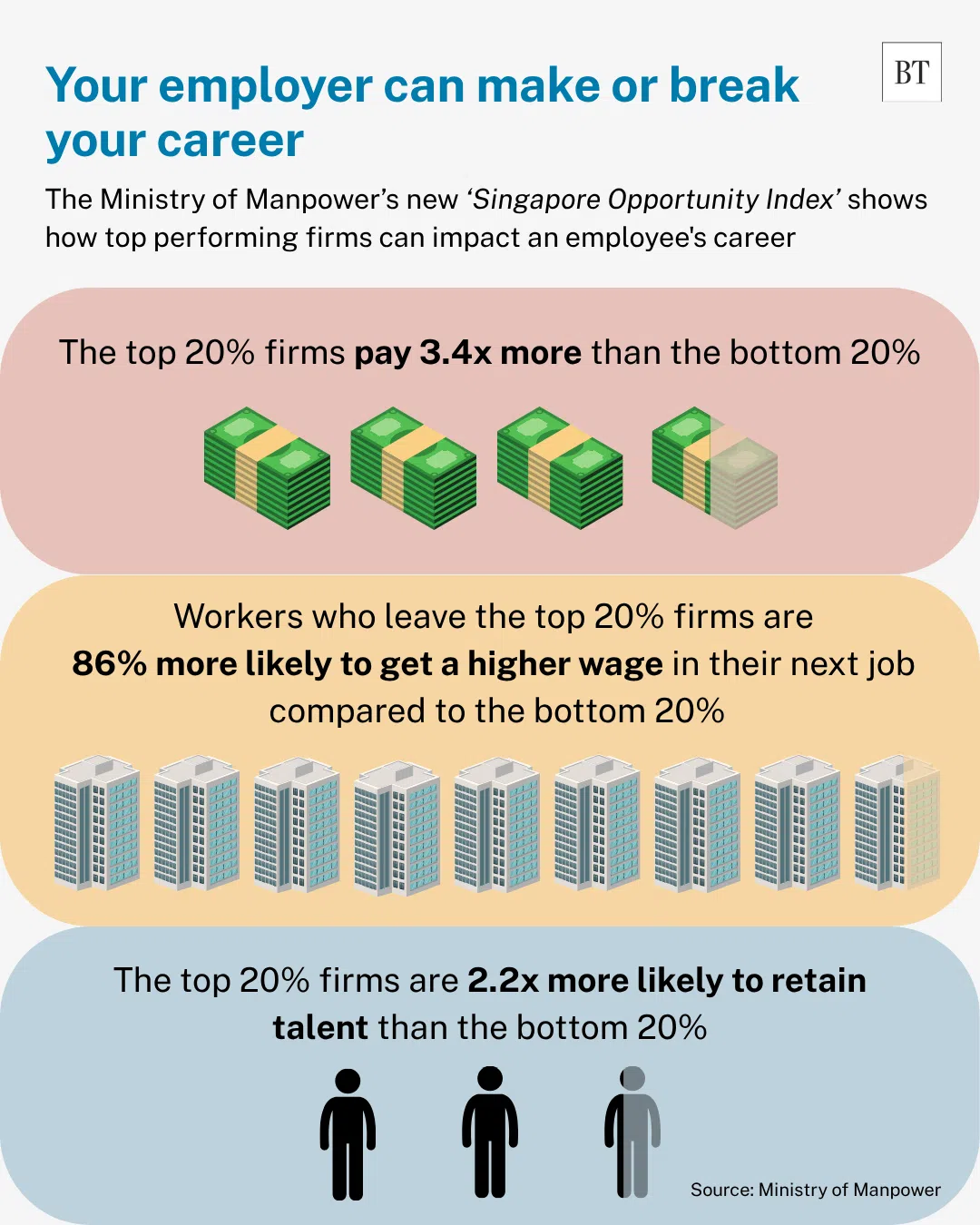New MOM index finds top employers across all sectors and sizes
What they have in common are ‘good human capital practices’, such as fair pay, employee retention

[SINGAPORE] Leading employers can be found across nearly every industry and firm size, but what they share is a consistent focus on the fundamentals, such as fair pay, providing avenues for career progression and employee retention.
This is according to data from a new index by the Ministry of Manpower (MOM), which aims to provide consistent and objective information for employers to understand how their actions can have an impact on the workforce.
The Singapore Opportunity Index (SOI), announced by Manpower Minister Tan See Leng on Tuesday (Oct 14) at the Institute for Human Resource Professionals’ People Behind People forum, also categorises top-performing companies into three archetypes.
Utilising verified government data, the SOI assesses employers across five key workforce outcomes: progression, pay, hiring, retention and gender parity, said MOM during a media briefing ahead of the announcement.
The ministry added that based on an organisation’s performance, it is then classified as either a Career Launcher, Career Builder or Career Anchor.
Career Launchers open doors to overlooked talent and prioritise skills over formal qualifications.
Career Builders invest in structured pathways to nurture growth, while Career Anchors foster long-term stability and trust through sustained employment.
Dr Tan said the SOI, which was created in partnership with the Singapore University of Social Sciences and independent think tank Burning Glass Institute (BGI), is the first of its kind in the Republic.
Unlike many indices that rely on self-reported surveys, the SOI draws on government data, including wage, education, age and gender information, said MOM.
The data set, it added, covers close to one million residents and nearly 1,500 organisations, including public sector employers.
The index also marks the first recommendation from the Tripartite Workgroup on Human Capital Capability Development, which convened in February to explore stronger business support and national standards for measuring workforce outcomes.

Good human capital practices
In his speech, Dr Tan highlighted key findings from a national-level insights report by the BGI, which drew on data from the index.
The report underscored the decisive role that employers play in shaping career trajectories.
Even under identical market conditions, Dr Tan said, deliberate choices in hiring, development and workforce management can produce vastly different outcomes for employees.
For instance, comparing firms at the extreme ends, workers at companies in the top 20 per cent of the index are 2.2 times more likely to stay past their first year and earn 3.4 times more than their counterparts in the bottom 20 per cent.
They also have an 86 per cent chance of getting a higher wage in their next role.
Dr Tan also noted that high-performing employers appear across nearly every sector – from construction and financial services to food and beverage – and range from small and medium-sized enterprises to multinational corporations.
What sets them apart, he said, is not their sector or size, but a “strong commitment to good human capital practices”.
The minister added that, beyond offering insights into how organisations can strengthen workforce capabilities, the index will also serve as a platform for recognition and learning.
From early next year, the SOI’s website will be updated to feature exemplary employers, each demonstrating distinct models of excellence.
These case studies will serve as tangible examples of how jobs can be shaped into long-term, meaningful careers, he noted.
“To be clear, the index is not intended as a ranking exercise,” said Dr Tan.
Rather, it is meant to serve as a common yardstick to help employers and workers better understand how organisations shape workforce outcomes, and to support more informed decision-making.
To that end, MOM has encouraged employers to take part in in-depth sessions organised by the National Trades Union Congress, Singapore National Employers Federation and Singapore Business Federation.
These sessions aim to help companies translate insights from the SOI into concrete, actionable workforce strategies.
Decoding Asia newsletter: your guide to navigating Asia in a new global order. Sign up here to get Decoding Asia newsletter. Delivered to your inbox. Free.
Copyright SPH Media. All rights reserved.

